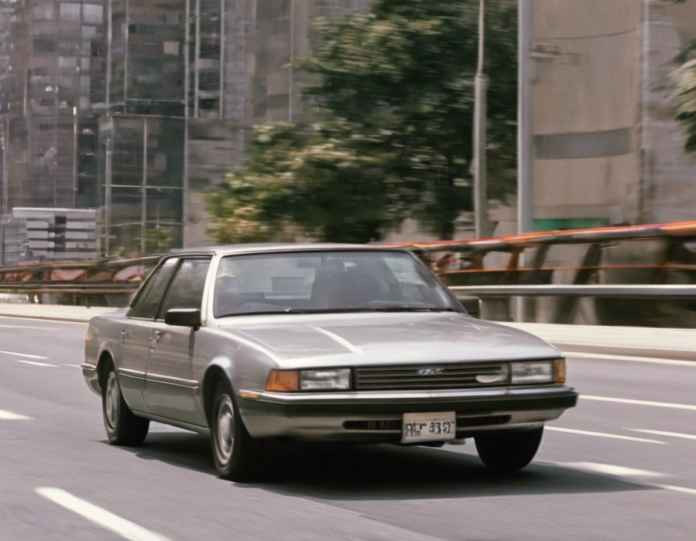Let’s consider a scenario where a car is starting from rest, and it accelerates at a constant rate F. The process of accelerating a car involves increasing its velocity over a period of time. In this blog post, we will delve into the physics behind this scenario, exploring the relationships between acceleration, velocity, time, and distance traveled. We will also touch upon the importance of understanding acceleration in real-world scenarios and provide some practical examples for better comprehension.
Understanding Acceleration:
Acceleration is defined as the rate of change of velocity with respect to time. When a car starts from rest and accelerates at a constant rate F, it means that the velocity of the car increases by F units per second, every second. This acceleration can be represented by the formula:
[ a = \frac{Δv}{Δt} ]
where:
– ( a ) = acceleration
– ( Δv ) = change in velocity
– ( Δt ) = change in time
Equations of Motion:
To analyze the motion of the car, we can utilize the equations of motion, which relate the variables of acceleration, velocity, time, and distance. The three primary equations of motion for uniformly accelerated motion are:
- ( v = u + at )
This equation relates the final velocity ( v ) of the car with the initial velocity ( u ), acceleration ( a ), and time ( t ) taken to accelerate.
- ( s = ut + \frac{1}{2}at^2 )
This equation gives the distance ( s ) traveled by the car during acceleration, where ( u ) is the initial velocity, ( a ) is the acceleration, and ( t ) is the time taken.
- ( v^2 = u^2 + 2as )
This equation relates the final velocity ( v ) squared with the initial velocity ( u ), acceleration ( a ), and distance traveled ( s ) during acceleration.
Practical Example:
Let’s consider a practical example to demonstrate the concept of accelerating a car. Suppose a car starting from rest accelerates at a rate of 2 m/s². We want to find out the velocity of the car after 5 seconds and the distance it covers during this acceleration.
- Calculating Velocity: Using the equation ( v = u + at ), where initial velocity ( u = 0 ), acceleration ( a = 2 m/s² ), and time ( t = 5 s ):
[ v = 0 + (2 \times 5) = 10 m/s ]
Therefore, the velocity of the car after 5 seconds is 10 m/s.
- Calculating Distance: Using the equation ( s = ut + \frac{1}{2}at^2 ), we get:
[ s = 0 \times 5 + \frac{1}{2} \times 2 \times 5^2 = 25 m ]
The car covers a distance of 25 meters during this acceleration.
Importance of Acceleration in Real Life:
Understanding acceleration is crucial in various aspects of life, especially in the field of transportation and sports. In transportation, acceleration plays a vital role in optimizing vehicle performance, fuel efficiency, and safety. Racing cars, for instance, rely heavily on acceleration to achieve high speeds in a short amount of time. Moreover, acceleration is fundamental in fields like physics, engineering, and even in everyday activities like driving, cycling, or running.
FAQs (Frequently Asked Questions):
1. What is the difference between acceleration and velocity?
Acceleration is the rate of change of velocity, while velocity is the rate of change of displacement. Acceleration indicates how quickly an object is changing its velocity, either by speeding up, slowing down, or changing direction.
2. Can acceleration be negative?
Yes, acceleration can be negative. Negative acceleration, also known as deceleration, occurs when an object is slowing down. It indicates a decrease in velocity over time.
3. How does air resistance affect the acceleration of a car?
Air resistance, also known as drag, acts in the opposite direction to the motion of the car. It can reduce the acceleration of a car by opposing its forward motion, thus requiring more power from the engine to maintain acceleration.
4. What is the role of friction in the acceleration of a car?
Friction between the tires and the road surface provides the necessary traction for a car to accelerate. Without friction, the wheels would slip, and the car would not be able to accelerate efficiently.
5. How does the mass of a car affect its acceleration?
The mass of a car directly influences its acceleration. Heavier cars require more force to accelerate compared to lighter cars due to their inertia. Therefore, a lighter car tends to accelerate more quickly than a heavier car, assuming all other factors remain constant.
In conclusion, understanding the concept of accelerating a car from rest at a rate F involves grasping the principles of acceleration, utilizing equations of motion, and recognizing the practical implications in real-world scenarios. By comprehending the relationship between acceleration, velocity, time, and distance, individuals can better appreciate the physics behind motion and its significance in various applications.


